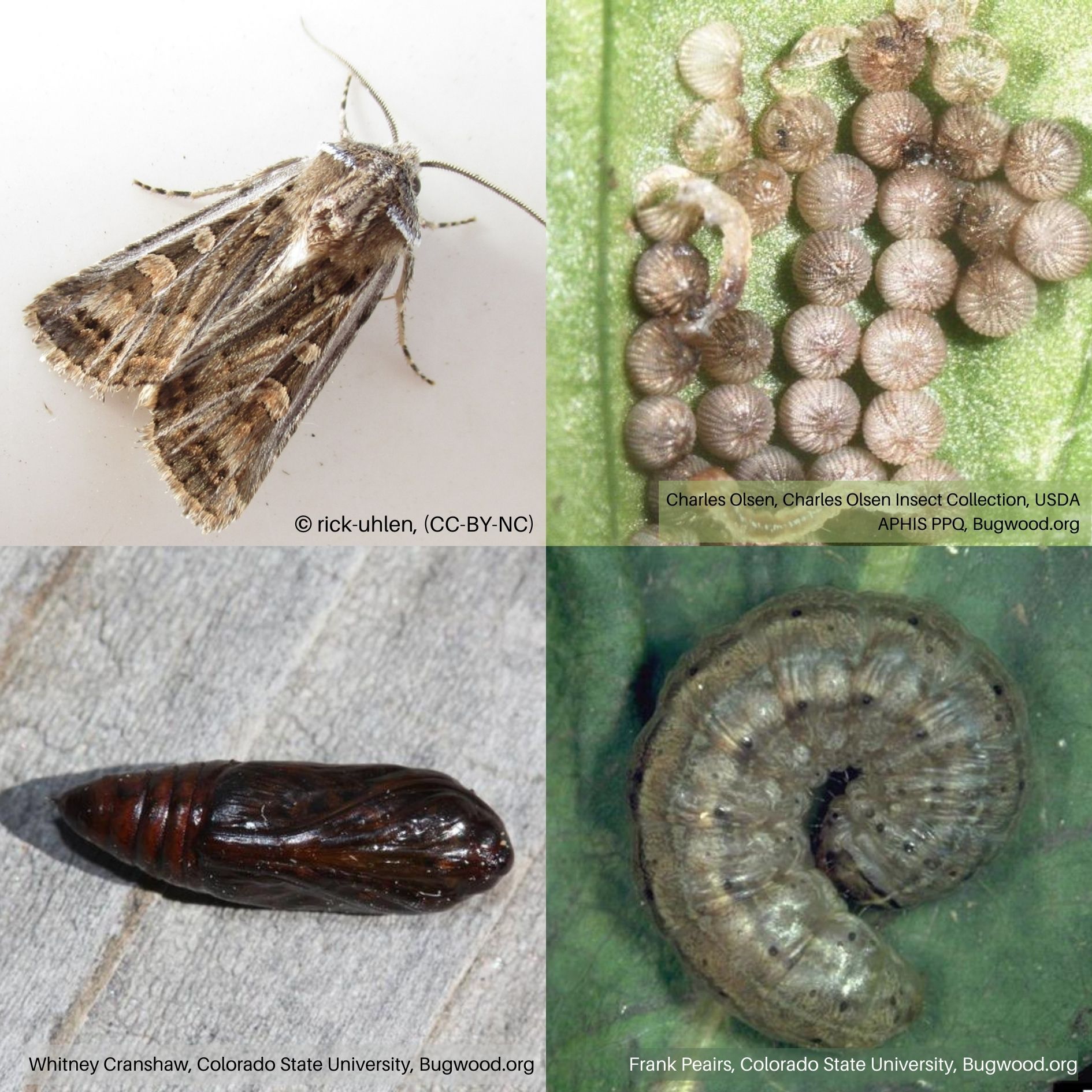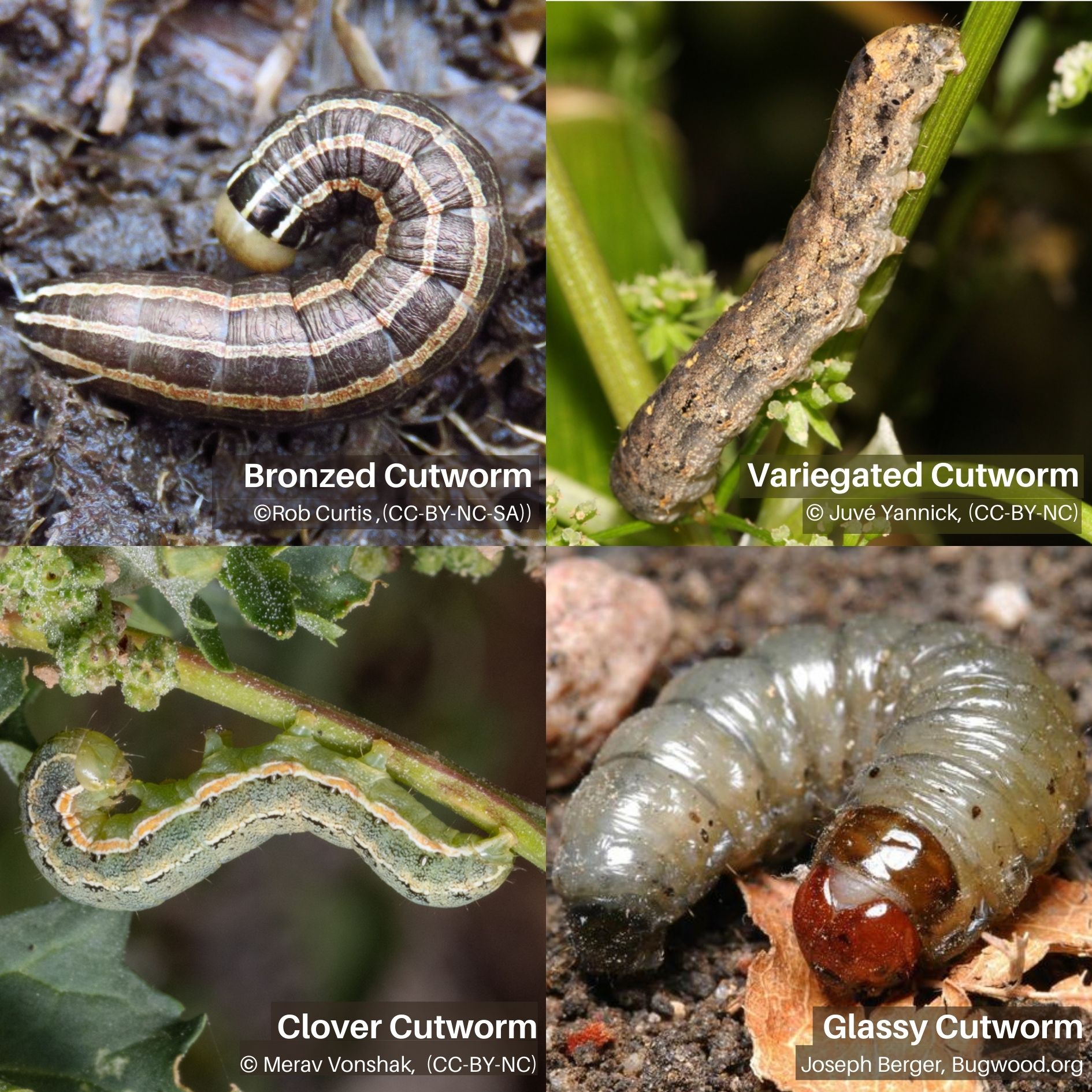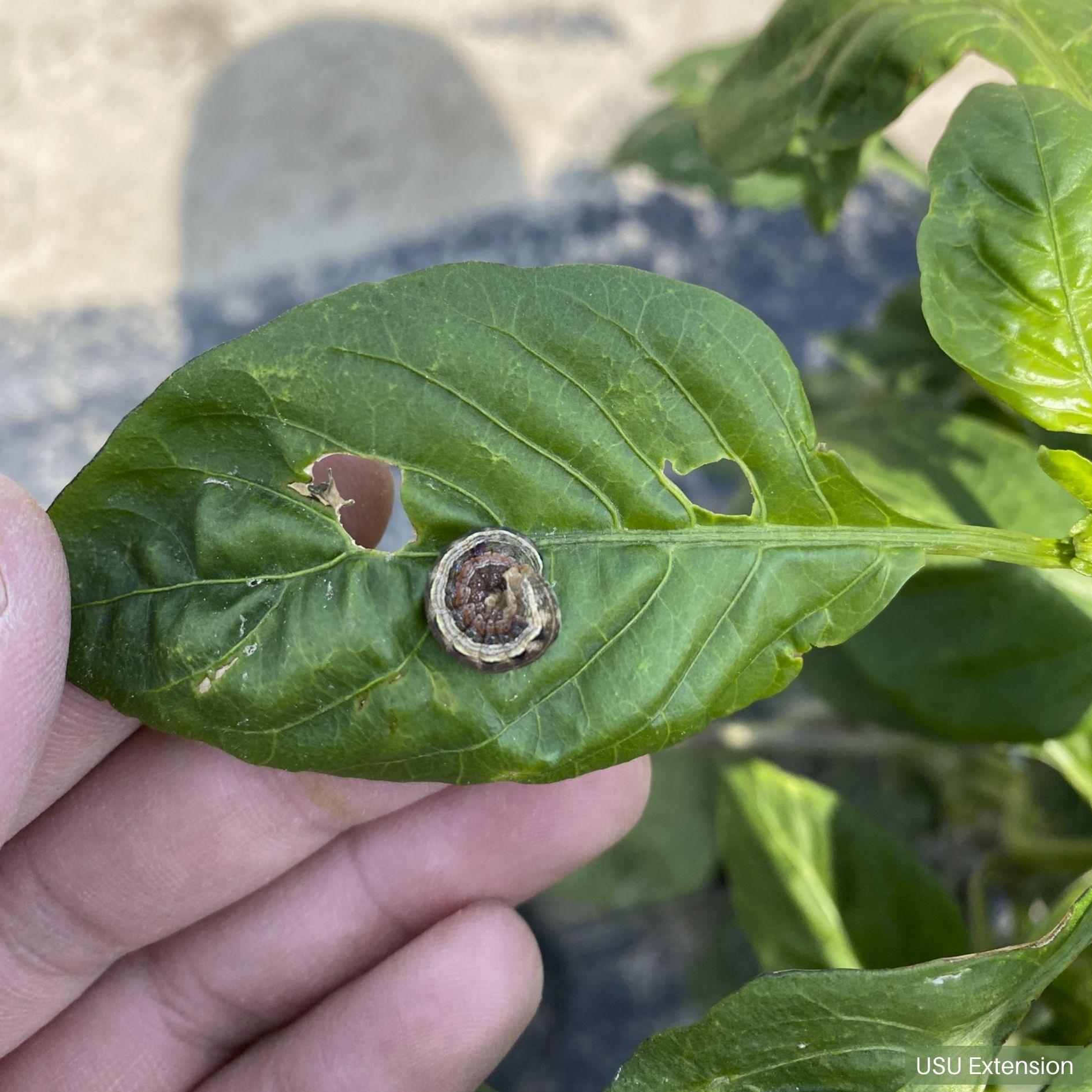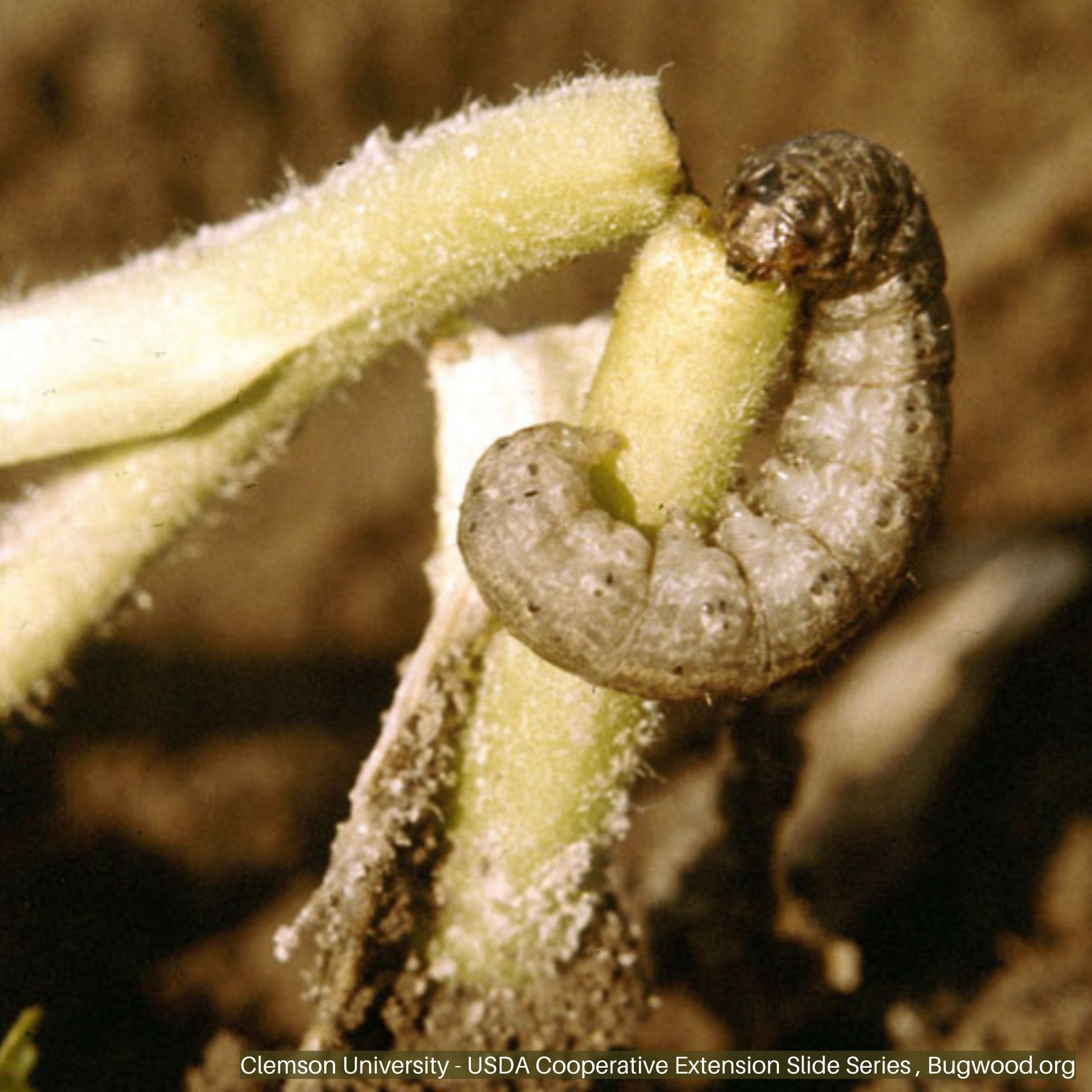Cutworms on Vegetables
 Army Cutworm (Euxoa auxiliaris) Life Stages
Army Cutworm (Euxoa auxiliaris) Life Stages Cutworm Species in Utah
Cutworm Species in Utah Cutworm and Feeding Damage on Pepper Foliage
Cutworm and Feeding Damage on Pepper Foliage Cutworm Feeding on Plant Stalk
Cutworm Feeding on Plant StalkHOSTS
- Artichoke
- Asparagus
- Brassicas
- Cucurbits
- Corn
- Legumes
- Leafy Greens
- Onion
- Potato
- Root Crops
- Solanaceae Crops
OVERVIEW
Cutworms can be found all over the United States, with various species found in Utah. These insects belong to a large group of night-flying moths in the family Noctuidae. Cutworms can cause severe damage during outbreak period.
Examples of cutworm species found in Utah include:
- Army Cutworm (Euxoa auxiliaris)
- Black Cutworm (Agrotis ipsilon)
- Bronzed Cutworm (Nephelodes minians)
- Clover Cutworm (Discestra trifolii)
- Dark-Sided Cutworm (Euxoa messoria)
- Dingy Cutworm (Feltia jaculifera)
- Glassy Cutworm (Apamea devastator)
- Pale Western Cutworm (Agrotis orthogonia)
- Red-backed Cutworm (Euxoa ochrogaster)
- Variegated Cutworm (Peridroma saucia)
- Western Bean Cutworm (Loxagrotis albicosta)
DESCRIPTION
Larvae are dull gray to brown (depending on the species). Cutworms notably curl into a 'C' when they are distrubed.
BIOLOGY
Egg | Larva | Pupa | Adult
- Two overlapping generations of black and variegated cutworms per year.
- One generation of army, pale western, and glassy cutworms per year.
- Overwinter as larvae in the soil or under plant debris.
Cutworms are most active and cause the most damage during spring and early summer months.
SYMPTOMS
Larvae feed with chewing mouthparts and can clip off seedlings at the soil line reducing stands. Later in the season, fruit and foliage may be damaged.
SCOUTING
- Larvae can be seen as early as late January into April.
- Look for seedlings (especially beans) cut off near the soil and use a trowel to look for larvae in the soil nearby.
- Look for wilted plants that may indicate stem feeding injury.
- Later in the season, monitor plants for foliage damage.
- Pheromone traps can be used to monitor adult male moths.
GENERAL MANAGEMENT
Cutworms infestations are sporadic. Consider treatment if large numbers of overwintering cutworms are observed.
- Remove cool-season weeds along field edges (e.g. lambsquarters and wild mustards).
- Fall tillage can help destroy or expose overwintering pupae.
- Focus on fields with an early season weed infestation, and those planted late.
- Protect seedlings with cardboard or plastic collars.
INSECTICIDES
- Organic insecticide options include those with active ingredients such as Bacillus thuringiensis (Bt), spinosad, pyrethrins, horticultural oils, and insecticidal soaps
- Synthetic insecticide options include those with active ingredients such as zeta-cypermethrin, permethrin, lambda-cyhalothrin, esfenvalerate, deltamethrin, cyfluthrin, bifenthrin, and carbaryl.

